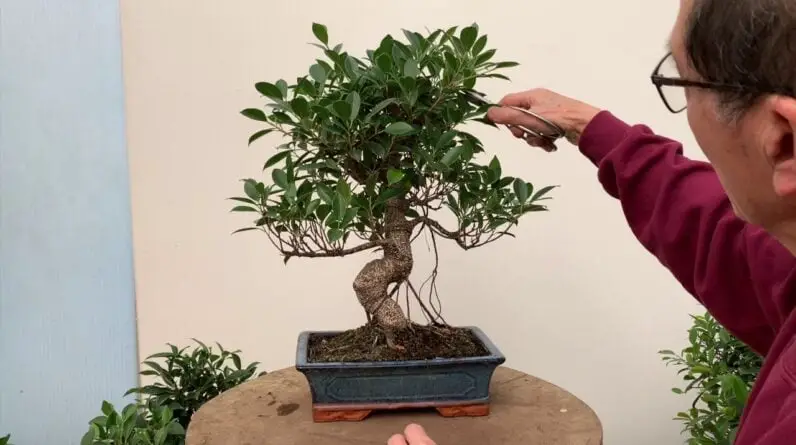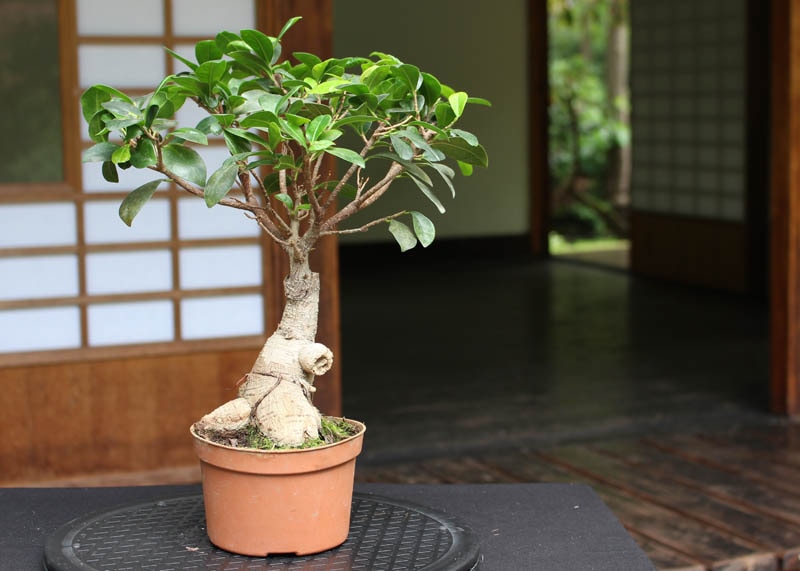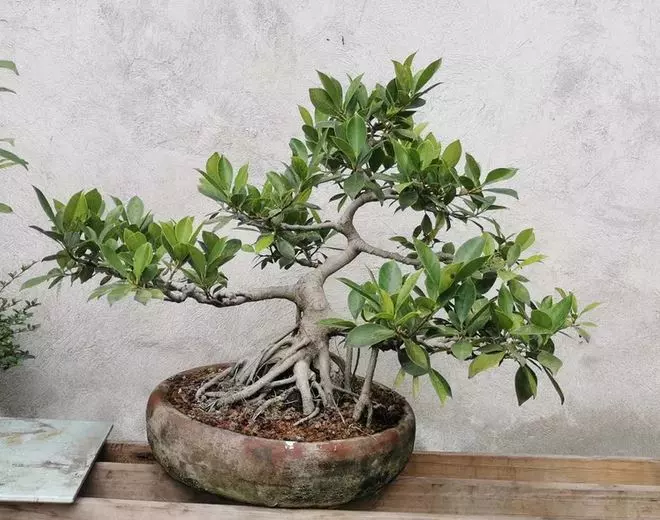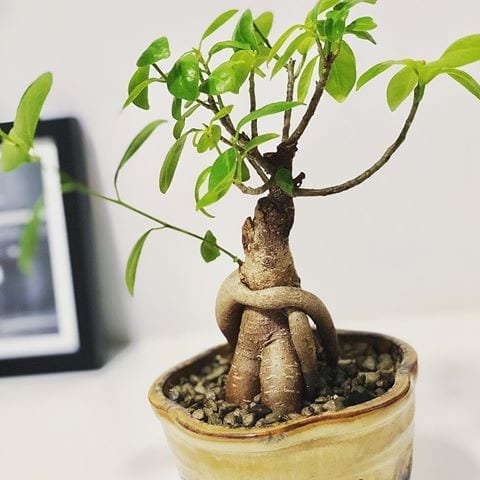
Looking to master the art of caring for and pruning your ficus bonsai? Look no further! In this ultimate guide, we’ll provide you with everything you need to know to become an expert in ficus bonsai care and pruning.
From understanding the unique needs of these beautiful trees to learning the best techniques for shaping and maintaining them, we’ve got you covered. Get ready to dive into a wealth of information, including personal opinions, insightful analysis, expert opinions, and research from credible resources.
So grab your pruning shears and let’s get started on this fascinating journey into ficus bonsai care and pruning!
Ficus Bonsai Care
Bonsai trees are an art form that requires attention and care to maintain their beauty and health. Ficus bonsai trees, in particular, are popular choices among bonsai enthusiasts due to their resilience and adaptability. In this comprehensive article, we will guide you through the various aspects of ficus bonsai care, including understanding the ficus bonsai, light requirements, watering, soil requirements, temperature and humidity, fertilizing, pest and disease control, repotting, training and wiring, and pruning.
Understanding the Ficus Bonsai
Types of Ficus Bonsai
Ficus bonsai trees belong to the Ficus genus, which includes a wide variety of species. Some common types of ficus bonsai include the Ficus microcarpa, Ficus retusa, Ficus benjamina, and Ficus panda. Each type has its own distinct characteristics and growth patterns, but they all share the same elegance and beauty as bonsai specimens.
Characteristics of Ficus Bonsai
Ficus bonsai trees are known for their glossy green leaves, which create a sense of tranquility and harmony. These trees have the ability to develop aerial roots, which can add a unique touch to the overall appearance of the bonsai. Ficus bonsai can be trained into different styles, including formal upright, informal upright, slanting, cascading, and broom.
Choosing the Right Ficus Bonsai Tree
When selecting a ficus bonsai tree, it is important to consider factors such as the tree’s age, size, and overall health. Look for a bonsai tree that has a well-developed trunk and branches, with balanced foliage distribution. Additionally, inspect the roots to ensure they are healthy and properly established within the pot.
Understanding Ficus Bonsai Growth Patterns
Ficus bonsai trees exhibit both vigorous growth and a high tolerance for pruning. They can quickly develop thick trunks and branches, making them suitable for creating a mature and elegant bonsai tree. Understanding the growth patterns of ficus bonsai is essential for proper care and maintenance, as it allows you to anticipate the tree’s response to pruning and training techniques.

Light Requirements
Amount of Light Needed
Proper lighting is crucial for the health and well-being of ficus bonsai trees. These trees thrive in bright, indirect sunlight. However, they can also tolerate lower light conditions for short periods. As a general rule, ficus bonsai should receive at least 4-6 hours of sunlight per day to promote healthy growth and foliage development.
Natural vs Artificial Light
If you are unable to provide sufficient natural sunlight, artificial lighting can be used as a supplement. LED grow lights are a popular choice among bonsai enthusiasts, as they provide a full spectrum of light and can be adjusted to mimic natural sunlight. Place the artificial light source above the bonsai tree, ensuring it is positioned at the appropriate distance to avoid burning the foliage.
Tips for Proper Lighting
To ensure your ficus bonsai receives adequate lighting, consider the following tips:
- Place the bonsai tree near a window with bright, indirect sunlight.
- Rotate the bonsai regularly to ensure all sides receive equal exposure to light.
- Monitor the foliage for any signs of sunburn or light deficiency, such as yellowing leaves or reduced growth.
- Adjust the distance and duration of artificial lighting based on the specific needs of your ficus bonsai.
Watering
Finding the Right Balance
Proper watering is essential for the health and survival of ficus bonsai trees. It is crucial to find the right balance between overwatering and underwatering. Overwatering can lead to root rot and fungal diseases, while underwatering can cause the tree to dry out and wither.
Checking Soil Moisture
To determine when to water your ficus bonsai, it is important to check the moisture level of the soil. Use your finger or a moisture meter to assess the soil’s dryness. Water the tree only when the top inch of soil feels dry to the touch. Avoid watering if the soil is still moist, as this can lead to waterlogging.
Frequency of Watering
The frequency of watering ficus bonsai trees varies depending on factors such as temperature, humidity, and soil type. As a general guideline, ficus bonsai trees typically require watering every 2-3 days during the growing season and every 4-7 days during the dormant period. However, it is crucial to monitor the soil moisture level and adjust the watering schedule accordingly.
Proper Watering Techniques
When watering ficus bonsai trees, it is important to ensure thorough hydration while avoiding water stagnation. Follow these proper watering techniques:
- Water the bonsai tree evenly, ensuring the entire soil surface is moistened.
- Avoid overhead watering, as it may cause damage to the leaves and lead to fungal growth.
- Use a watering can or a gentle spray bottle to provide a controlled and targeted flow of water.
- Allow excess water to drain out from the drainage holes of the bonsai pot to prevent waterlogging.

Soil Requirements
Choosing the Right Soil Mix
The choice of soil mix greatly influences the overall health and growth of ficus bonsai trees. A well-draining soil mix allows for proper oxygenation of the roots and prevents waterlogging. A suitable soil mix for ficus bonsai includes a combination of organic matter, such as akadama or sphagnum peat moss, and inorganic matter, such as pumice or perlite.
Importance of Drainage
Proper drainage is crucial for ficus bonsai trees, as it prevents excess water from sitting in the soil and causing root rot. Ensure that the bonsai pot has sufficient drainage holes to allow excess water to escape. Additionally, consider adding a layer of gravel or small stones at the bottom of the pot to further enhance drainage.
Signs of Poor Soil
Signs of poor soil in ficus bonsai trees include waterlogging, yellowing or wilting leaves, stunted growth, and the presence of fungal growth or pests. If you notice these signs, it may be an indicator of poor soil drainage or nutrient deficiencies. Adjusting the soil mix and improving drainage can help alleviate these issues.
Tips for Soil Maintenance
To maintain healthy soil conditions for your ficus bonsai, consider the following tips:
- Regularly inspect the soil for moisture levels and adjust the watering schedule accordingly.
- Use a chopstick or a root hook to gently loosen and aerate the soil, promoting healthy root growth.
- Monitor the health of the bonsai tree to identify any signs of nutrient deficiencies or soil-related issues.
- Consider repotting the bonsai tree every 1-2 years to refresh the soil and promote root development.
Temperature and Humidity
Ideal Temperature Range
Ficus bonsai trees thrive in temperatures between 60°F (15°C) and 75°F (24°C). They can tolerate slightly cooler temperatures during the dormant period, but prolonged exposure to frost or extreme cold can damage the tree. It is important to protect ficus bonsai from temperature extremes and provide a stable and suitable environment for their growth.
Adjusting Humidity Levels
Ficus bonsai trees prefer moderate to high levels of humidity, as they are native to tropical and subtropical regions. To increase humidity around the bonsai, consider placing a humidity tray filled with water near the tree. Alternatively, misting the foliage with water can also help provide temporary moisture.
Dealing with Temperature Extremes
During hot summers or cold winters, it may be necessary to take extra precautions to protect ficus bonsai trees from temperature extremes. Consider the following measures:
- Move the bonsai to a shaded area or provide shade cloth during scorching summers to prevent sunburn.
- Place the bonsai away from drafts or cold windows during winter to avoid exposure to cold air.
- Consider using a frost blanket or wrapping the bonsai pot and branches with insulation material during freezing temperatures.

Fertilizing
Understanding Nutrient Needs
Ficus bonsai trees require a balanced diet of essential nutrients to promote healthy growth and development. Nitrogen, phosphorus, and potassium are the primary macronutrients needed, along with secondary macronutrients such as calcium, magnesium, and sulfur. Additionally, micronutrients like iron, manganese, and zinc are also important for proper physiological functions.
Types of Fertilizers
There are various types of fertilizers available for ficus bonsai trees, including slow-release granular fertilizers, liquid fertilizers, and organic fertilizers. Slow-release fertilizers provide nutrients over an extended period, liquid fertilizers deliver nutrients quickly, and organic fertilizers offer a natural and slow-release nutrient source. Choose a fertilizer specifically formulated for bonsai trees and follow the manufacturer’s instructions for application rates.
Timing and Frequency of Fertilizing
Ficus bonsai trees should be fertilized throughout the growing season, typically from spring to autumn. The frequency of fertilizing depends on the type of fertilizer used, as well as the specific needs of the bonsai tree. As a general guideline, apply liquid or organic fertilizers every 2-4 weeks and slow-release fertilizers every 3-4 months. Adjust the fertilizing schedule based on the tree’s response and growth.
Avoiding Overfertilization
Overfertilization can be detrimental to ficus bonsai trees, leading to leaf burn, root damage, or nutrient imbalances. To avoid overfertilizing, it is important to follow the recommended application rates and avoid applying fertilizers when the tree is stressed or during the dormant period. Regularly monitor the foliage and soil conditions to ensure proper nutrient uptake and avoid excess accumulation.
Pest and Disease Control
Common Pests for Ficus Bonsai
Ficus bonsai trees are susceptible to various pests, including aphids, mealybugs, spider mites, scale insects, and fungus gnats. These pests can cause leaf damage, stunted growth, and overall decline in the tree’s health if left untreated.
Preventing and Treating Pests
To prevent and treat pest infestations in ficus bonsai trees, consider the following measures:
- Regularly inspect the tree for any signs of pests, such as webbing, sticky residue, or small crawling insects.
- Use organic insecticidal soaps or horticultural oils to control pests without harming the tree or beneficial insects.
- Prune and remove any heavily infested branches or leaves to minimize the spread of pests.
- Maintain proper hygiene and cleanliness around the bonsai tree, removing any fallen leaves or debris that can harbor pests.
Identifying Signs of Disease
Ficus bonsai trees can also be affected by various diseases, such as root rot, leaf spot, powdery mildew, and fungal infections. Signs of disease include yellowing or wilting leaves, leaf spots or discoloration, distorted growth, or unusual fungal growth on the foliage or soil.
Effective Disease Management
To effectively manage and prevent the spread of diseases in ficus bonsai trees, consider the following strategies:
- Ensure proper watering practices to prevent waterlogging and root rot.
- Provide adequate airflow and ventilation around the bonsai tree to reduce humidity and discourage fungal growth.
- Remove and dispose of any infected or diseased foliage or branches to prevent further spread.
- Apply appropriate fungicides or treatments if necessary, following the manufacturer’s instructions.

Repotting
When to Repot
Repotting is an essential aspect of ficus bonsai care, as it allows for root maintenance and provides fresh soil for the tree’s growth. Ficus bonsai trees should be repotted every 1-2 years, typically during the early spring before the active growth period. Signs that indicate the need for repotting include roots circling the pot, reduced growth, yellowing leaves, or poor drainage.
Choosing the Right Pot
When choosing a new pot for repotting, consider the size and style that complement the tree’s characteristics. The pot should have sufficient drainage holes and be slightly larger than the previous pot to allow for root growth. Additionally, select a pot made of durable material, such as ceramic or clay, to ensure stability and adequate moisture regulation.
Repotting Process
To successfully repot a ficus bonsai tree, follow these steps:
- Carefully remove the tree from its current pot, loosening the roots with a root rake or a chopstick.
- Trim any long or circling roots, ensuring they are evenly distributed throughout the root ball.
- Place a layer of drainage material, such as gravel or bonsai mesh, at the bottom of the new pot.
- Fill the pot with the appropriate soil mix, gently placing the tree in the center and backfilling the soil around the roots.
- Firmly press down the soil to remove any air pockets and ensure stability.
- Water the bonsai thoroughly after repotting and place it in a shaded area for a few days to allow the roots to adjust.
Caring for the Newly Repotted Tree
After repotting, it is important to provide proper care and attention to the newly repotted ficus bonsai tree. Place the bonsai in a location with filtered sunlight and avoid direct exposure to intense sunlight for a few weeks. Monitor the soil moisture and adjust the watering schedule accordingly, ensuring the tree remains hydrated. Minimize pruning or heavy training immediately after repotting to allow the tree to recover and establish new roots.
Training and Wiring
Ficus bonsai trees can be trained into various styles and shapes, adding an artistic element to their appearance. Training involves guiding the tree’s growth through pruning, wiring, and shaping techniques. Wiring is a common technique used to position branches and create the desired structure of the bonsai tree.
Importance of Pruning
Pruning is an essential part of ficus bonsai care, as it helps maintain the tree’s shape, enhance ramification, and promote overall health. Regular pruning encourages new growth, removes dead or diseased branches, and helps achieve the desired silhouette of the bonsai.
Different Types of Pruning for Ficus Bonsai
There are several types of pruning techniques commonly used for ficus bonsai trees, including:
- Maintenance pruning: Removing overgrown or unwanted branches to maintain the bonsai’s shape.
- Thinning pruning: Removing excess foliage to improve light penetration and air circulation.
- Structural pruning: Shaping the branches and trunk to create the desired silhouette and structure.
- Pinching and defoliation: Pinching off new growth or selectively removing leaves to enhance ramification and encourage back-budding.
Tools Needed for Pruning
To properly prune ficus bonsai trees, you will need a set of essential tools, including:
- Pruning shears: Used for general pruning and removing small branches.
- Concave branch cutters: Ideal for making clean cuts and removing larger branches.
- Wire cutters: Used to remove or cut the wire during the wiring process.
- Jin pliers: Used to create deadwood features and remove bark or unwanted branches.
- Root rake: Used for root maintenance and loosening the roots during repotting.
Guidelines for Pruning Ficus Bonsai
When pruning ficus bonsai trees, consider the following guidelines:
- Prune during the tree’s active growth period, typically in spring or early summer.
- Use sharp and sterile tools to avoid damaging the tree and spreading diseases.
- Start pruning from the top of the tree and work your way down, maintaining balance and proportion.
- Regularly observe the tree’s response to pruning and adjust your techniques accordingly.
- Avoid heavy pruning during repotting or when the tree is in a weakened state.
In conclusion, ficus bonsai care requires a comprehensive understanding of the tree’s needs and proper techniques for maintenance and enhancement. By following the guidelines for light requirements, watering, soil requirements, temperature and humidity, fertilizing, pest and disease control, repotting, training and wiring, and pruning, you can ensure the health and beauty of your ficus bonsai tree. Remember to observe and respond to the tree’s individual needs, as each bonsai specimen is unique and may require personalized care. With dedication and attentiveness, you can enjoy the artistry and tranquility of a flourishing ficus bonsai.

The Best-Kept Secrets of Ficus Bonsai Success: Tips and Tricks Revealed


